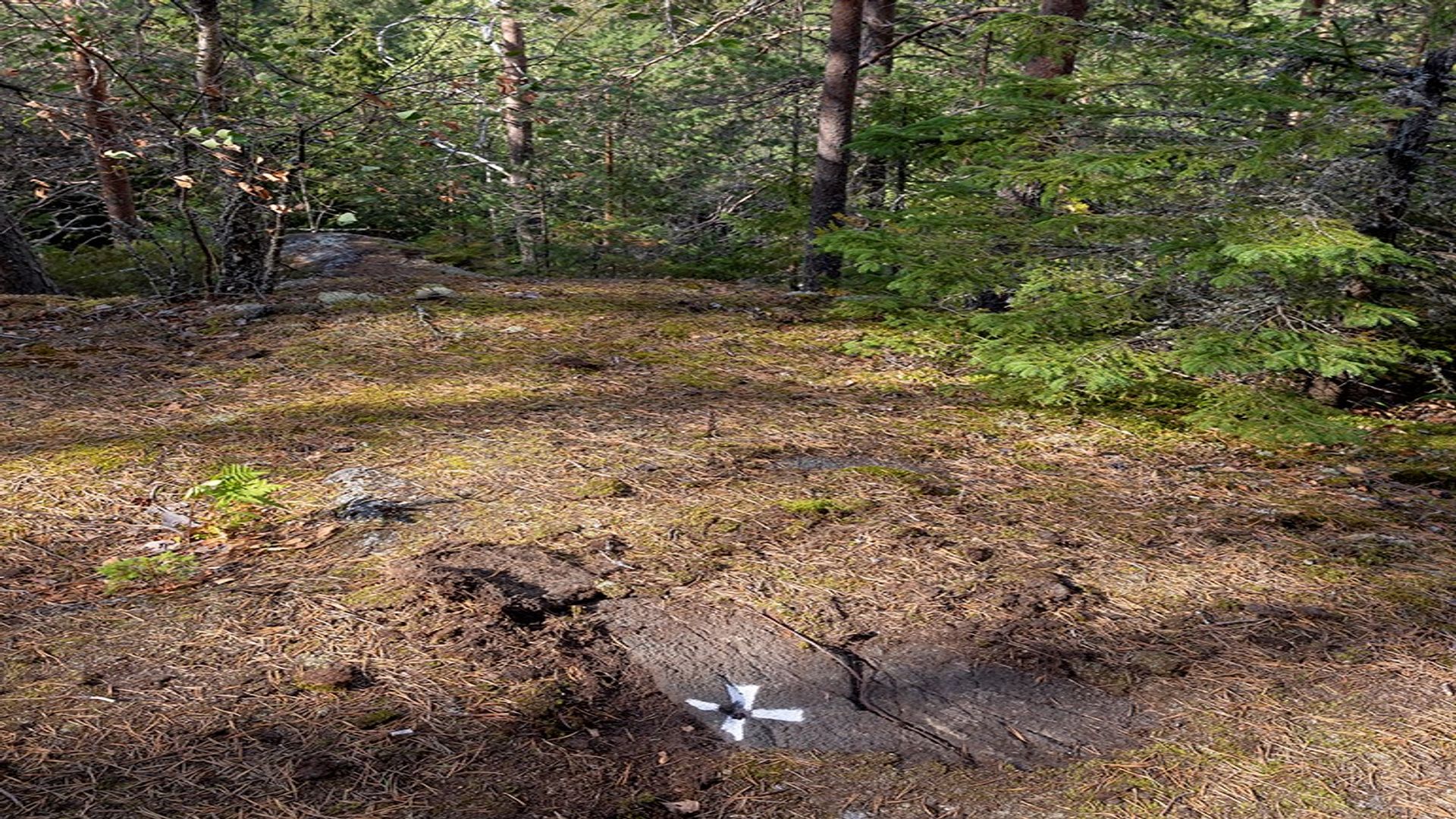
The Hillfort of Havukkakallio
Havukkakallio hillfort is a rare cultural heritage site in the municipality of Ilomantsi. It was used as a fortification to defend the local population from invaders in the Middle Ages (1300s-1500s AD). Havukkakallio’s steep hills and high walls, the remains of which can still been seen on the hilltop, helped to defend the settlement against enemies.
Follow your choice of the two paths shown on the map to experience the fascinating history and lush nature of Havukkakallio. The blue path takes you on an easy-going circuit of the area, while the red path includes slopes that are steeper and more challenging. There is a fireplace (‘laavu’) seating area right by the hillfort where you can rest and have a snack.
Hillfort and Execution Site
The Middle Ages were a restless time in Ilomantsi. The Karelian people faced the approach of enemies from both east and west. In order to defend themselves from the threats, the local people started constructing defensive walls on top of Havukkakallio.
The hillfort was built throughout three distinct time periods. During the first period, between the early 1300s and early 1400s, defensive wooden structures were constructed. This original structure was rebuilt and improved in the 1400s. In the 1500s, the old walls were elevated by covering the pre-existing wooden structures with soil.
In the early 1800s, Havukkakallio was used as an execution site. One person lost their life here just before the death penalty was abolished in what was then the Grand Duchy of Finland.
Stories about this execution feature prominently in the oral histories of Ilomantsi. People told their children stories of the ghost of Havukkakallio and told them not to visit the area, as it was considered a ‘bad place’. Other stories about the area mention a spring that produces the ‘water of life’ and where a great treasure is hidden.
A cross symbol, cut in the bedrock, can be found on the hilltop. The origins and meaning of the cross are not known. Local stories speculate that this cross marked the location of the execution site. Another possible explanation is that cartographers from the 1800s or early 1900s used this spot as a topographic checkpoint and marked it as such.

The cross symbol on the hilltop
The Archaeology of Havukkakallio
Havukkakallio hillfort was first mentioned in archeological literature in the late 1800s. The first archaeological excavations, led by archaeologist Jouko Voionmaa, took place almost 100 years later, between 1961 and 1963. Despite extensive excavations, however, only two artefacts were found – a hunting spear and a harpoon - neither of which could be reliably dated. No research report was ever written and, despite Voionmaa's investigations, the history of Havukkakallio remained a mystery.
In 2021, Havukkakallio at last began revealing its secrets. Excavations conducted by archeologists Ville Laakso and Jasse Tiilikkala unearthed several pieces of burnt and unburnt wood inside one of the ancient fort's wall mounds. Radiocarbon dating has revealed these pieces of wood, which may be remains of the fort's walls, date from between the 1300s and 1500s. These remarkable findings are of great scientific and cultural value. For the first time, the usage of the hillfort can now be reliably dated.
Nature of Havukkakallio
The hillfort of Havukkakallio is located in a biodiverse old-growth forest. It is a gem in Ilomantsi where most forests are heavily utilized for industrial purposes.
48 bird species were detected on the site throughout inventories that were conducted in July 2021 and May 2022, such as goldcrest, willow tit, red-breasted flycatcher, ural owl, and northern goshawk.
22 polypore species where found on Havukkakallio in an inventory in October 2021. Polypores play a crucial role in the food chains of forests and act thus as "motors of biodiversity".
This website is maintained by Snowchange Cooperative, an independent non-profit that was started in late 2000 to document climate and environmental change in the North and work with local and Indigenous communities of the Northern regions. The Landscape Rewilding Programme of Snowchange advances community-based and -controlled efforts to fight climate change, enhance biodiversity and protect waterways.



Built by Nolwenture
Hosted by Bittiguru